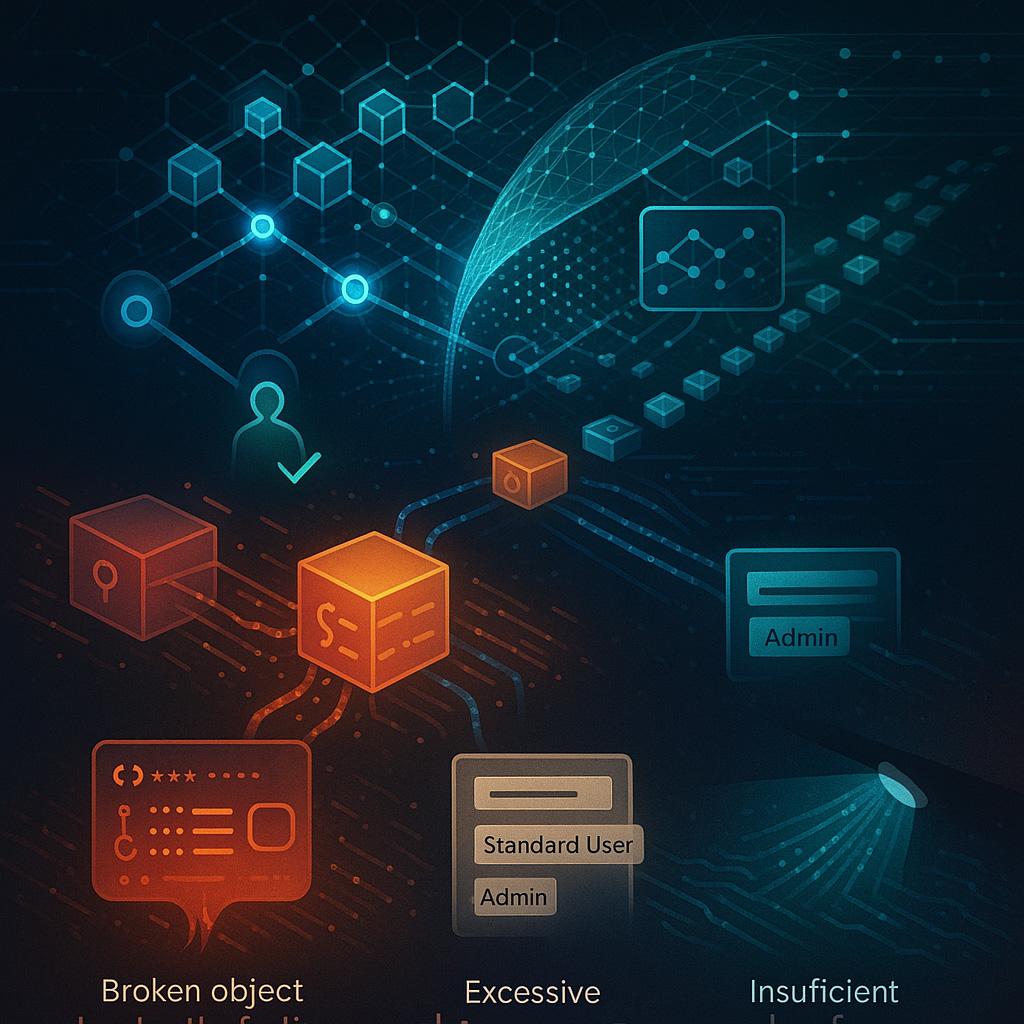API Security Vulnerabilities Your Security Team Is Missing

API SECURITY VULNERABILITIES YOUR SECURITY TEAM IS MISSING
In today's digital ecosystem, APIs serve as the connective tissue of modern applications, enabling seamless integration between services and unlocking new business capabilities. According to Gartner, APIs will become the most frequent attack vector by 2024, yet our security assessments consistently reveal that even mature security programs often overlook critical API vulnerabilities.
The explosion of API adoption has created an expanding attack surface that many organizations struggle to properly secure. During our recent security engagements, we've discovered that 76% of enterprises have critical or high-severity API vulnerabilities despite having established application security programs. This concerning gap between perceived and actual security posture demands immediate attention.
THE BLIND SPOTS IN API SECURITY
The most dangerous API vulnerabilities often hide in plain sight, missed by conventional security testing approaches. Our technical assessments have identified several persistent blind spots that security teams repeatedly overlook:
Broken Object-Level Authorization
The most prevalent and potentially damaging API vulnerability involves improper authorization checks that allow attackers to access or manipulate data belonging to other users. Unlike traditional ACL issues, these flaws manifest specifically in API contexts where object references are exposed directly through endpoints.
During a recent assessment of a financial services platform, we identified an API endpoint that properly authenticated users but failed to verify whether the requested data belonged to the authenticated user. This vulnerability exposed personal financial information for over 40,000 customers – a finding missed by multiple previous security reviews because they focused on authentication rather than authorization.
Excessive Data Exposure
APIs frequently return more data than displayed by the client application, creating invisible exposure that traditional security testing misses. Developers often implement a single API to serve multiple frontend needs, returning complete objects with sensitive fields that particular client applications might not display.
Our security testing regularly discovers APIs that return complete user objects including hidden sensitive data like internal user IDs, role mappings, and sometimes even credential hashes or internal system paths. This data provides valuable intelligence for attackers planning more sophisticated exploits.
Mass Assignment Vulnerabilities
Modern development frameworks automatically bind HTTP request parameters to program code variables or objects, creating a dangerous scenario where attackers can modify object properties never intended for external manipulation.
In a manufacturing client environment, we identified an API that permitted users to update their profile information but failed to properly restrict what properties could be modified. By adding administrative role parameters to legitimate update requests, attackers could elevate their permissions – a vulnerability missed by automated scanning tools that didn't understand the specific business context.
Insufficient Logging and Monitoring
The ephemeral nature of API attacks makes proper logging and monitoring essential, yet most organizations implement inadequate visibility into API activity. According to our analysis, only 23% of enterprises have logging sufficient to detect and investigate sophisticated API attacks.
This visibility gap extends the average time to detect API breaches to 246 days – nearly three times longer than the overall industry breach detection average of 87 days. Without proper monitoring, organizations remain blind to ongoing exploitation.
WHY TRADITIONAL SECURITY APPROACHES FAIL
These blind spots persist because conventional security approaches fundamentally misalign with modern API architectures. Application security programs often rely on automated scanning tools that excel at finding known vulnerability patterns but struggle with contextual issues specific to business logic. Meanwhile, manual penetration testing frequently focuses on the application's user interface rather than directly assessing the underlying APIs.
The dynamic nature of modern development compounds these challenges. APIs evolve rapidly, with an average of 22 deployments per month according to our client telemetry. This pace frequently outstrips security testing cycles, creating windows where changes reach production without proper security validation.
Documentation gaps further exacerbate the problem. Despite its critical importance, our assessments reveal that 64% of organizations lack accurate, up-to-date API documentation. Without this foundation, security teams struggle to properly scope testing efforts and often miss entire branches of API functionality.
CLOSING THE SECURITY GAP
Effectively addressing these blind spots requires a multi-faceted approach that aligns with modern development practices while enhancing security visibility:
Implement API Discovery and Inventory
Security begins with comprehensive visibility. Organizations must implement continuous API discovery processes that identify and catalog all active APIs, including shadow or deprecated endpoints that may remain accessible. This inventory should document each API's purpose, data accessed, authentication mechanisms, and risk classification.
A financial services client implementing this approach discovered 34% more API endpoints than their development teams had documented, including several legacy APIs with significant security vulnerabilities.
Adopt API-Specific Security Testing
Traditional security testing must evolve to address API-specific concerns. This includes analyzing business logic flows across multiple API calls, validating object-level authorization patterns, and testing for vulnerabilities in machine-to-machine authentication flows.
Implement Runtime Protection and Monitoring
Given the dynamic nature of modern APIs, static security controls prove insufficient. Leading organizations now implement API gateways and runtime protection capabilities that enforce security policies, monitor for suspicious patterns, and block attacks in real-time.
When one of our retail clients implemented comprehensive API monitoring, they identified suspicious access patterns that revealed an ongoing data harvesting attack against their product catalog API – activity that had continued undetected for months despite regular security testing.
THE EVOLVING LANDSCAPE
As organizations continue their digital transformation journeys, securing APIs becomes increasingly critical to overall security posture. The recently updated OWASP API Security Top 10 provides an excellent framework for addressing common vulnerabilities, but truly effective security requires going beyond checklist compliance to implement contextual, continuous protection.
The most successful organizations treat API security as an integral part of their API strategy rather than a separate concern. By embracing security as a fundamental design principle rather than an afterthought, they build resilient systems that enable innovation while protecting critical assets from increasingly sophisticated threats.

